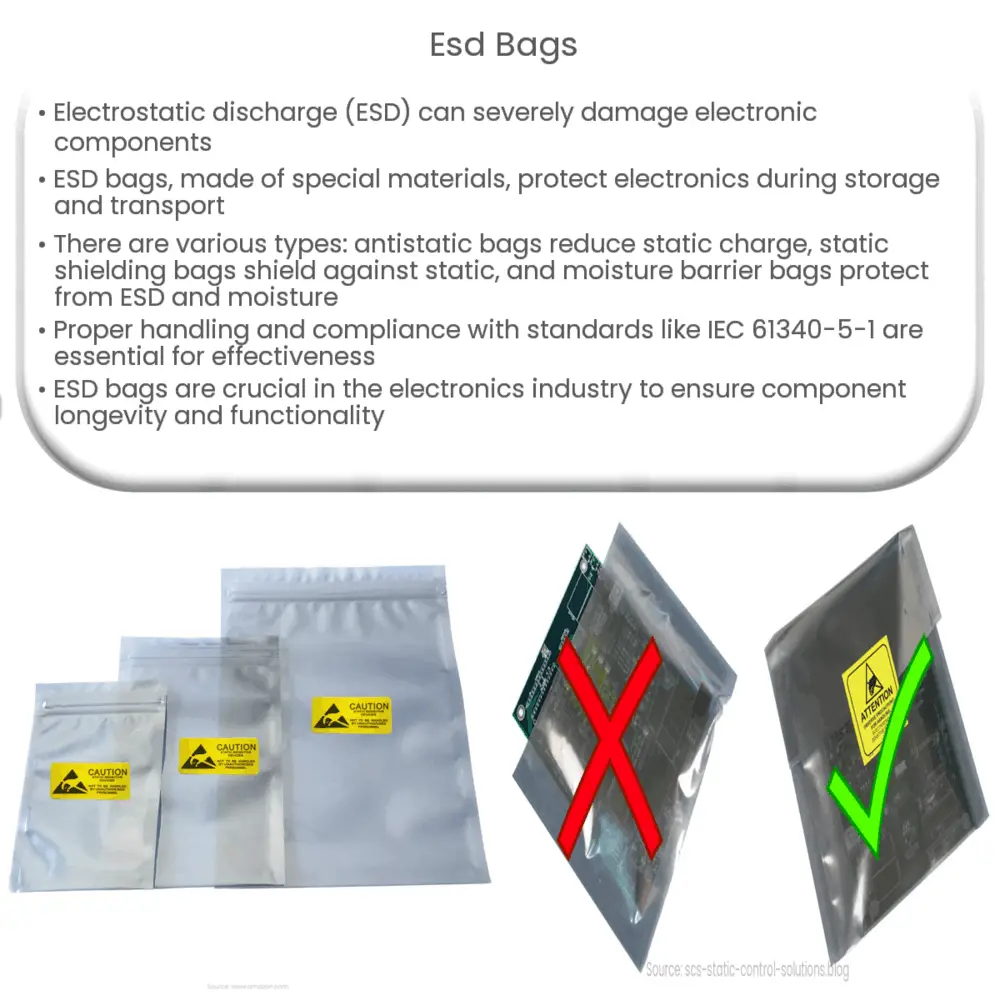Explore the role of ESD bags in protecting sensitive electronics from electrostatic discharge, types of ESD bags, and best practices.

Understanding ESD Bags
Electrostatic discharge (ESD) is a common phenomenon that poses significant threats to electronic components. Due to the sensitivity of these components, it is essential to understand and utilize preventative measures, such as ESD bags, to mitigate potential damage. This article provides a comprehensive exploration into ESD bags and their importance in the electronics industry.
The Phenomenon of Electrostatic Discharge
In our daily life, electrostatic discharge is not an uncommon event. You may have experienced a small shock when touching certain objects, particularly in dry environments. This sudden flow of electricity between two electrically charged objects is known as electrostatic discharge. Though it might be harmless to humans (save for a mild discomfort), it can be extremely damaging to electronic devices and components, causing failure or severe malfunction.
How ESD Bags Protect Your Electronics
The primary purpose of ESD bags is to protect electronics during storage and transportation. They are constructed with unique materials, often a blend of plastic and a metallic layer, which serve as a shield against static charges. By placing an electronic device inside an ESD bag, any potential static discharge from an external source is prevented from reaching the device. Therefore, the device remains unharmed and functional.
Types of ESD Bags
- Antistatic Bags: Antistatic bags are made of low-charging material that reduces the chances of creating a static charge. They do not provide direct protection from ESD but help in minimizing static electricity.
- Static Shielding Bags: These are the most commonly used ESD bags. They have a metallic layer that acts as a shield against static electricity. They also have an insulating layer that prevents static charge from being generated inside the bag.
- Moisture Barrier Bags (MBB): These bags protect sensitive electronics not only from ESD but also from moisture. They are often used when shipping electronics over long distances.
Choosing the right type of ESD bag depends on your specific requirements. If you are dealing with highly sensitive electronics, you may need a bag that offers more than just ESD protection.
Best Practices for Using ESD Bags
While the use of ESD bags significantly reduces the risk of damage due to electrostatic discharge, it is important to implement proper handling procedures. Firstly, before placing an electronic component in an ESD bag, ensure that you are properly grounded to avoid the transfer of static electricity. Secondly, when removing the device from the bag, it should be done in a static-free environment to maintain the protective layer’s integrity. Finally, reuse of ESD bags is not typically recommended. With every use, the bag’s effectiveness in preventing static discharge decreases.
Regulations and Standards
There are several regulatory standards concerning the use and manufacturing of ESD bags. One key international standard is the IEC 61340-5-1, which details the protection of electronic devices from electrostatic phenomena. It provides a comprehensive approach to ESD control, including guidelines for using ESD bags. Compliance with such standards ensures the quality and efficacy of ESD protective measures.
The Importance of ESD Bags in the Electronics Industry
In the electronics industry, maintaining the functionality and longevity of components is crucial. With the miniaturization trend in electronics, the components are becoming even more sensitive to ESD. Thus, ESD bags play a vital role in the industry. They offer a cost-effective, reliable solution to prevent ESD damage, thereby saving businesses from costly repairs, returns, and potential loss of reputation due to malfunctioning products.
Conclusion
In conclusion, ESD bags are an integral part of safe electronic component handling, storage, and transportation. They provide essential protection against potentially damaging electrostatic discharge. The use of these bags, in conjunction with appropriate handling practices and compliance with regulatory standards, ensures the best possible protection for sensitive electronics. As technology continues to advance, the need for effective ESD protection measures like ESD bags is more important than ever.

